As defense forces in Ukraine fight on, 4 weeks into the conflict, the defenders remain defiant and there is no end in sight unless Russian forces withdraw and some sort of a truce can be called, the next move is Vladimir Putin’s, will he come to the negotiating table, or will he escalate the conflict into World War III? When, on Feb. 24, Russia unleashed its Ukraine invasion force in Europe’s biggest offensive since World War II and brandished the prospect of nuclear escalation if the West intervened, no one around the world expected the Ukrainians to last 48 hours, let alone a whole month. As reported by the AP:
U.S. President Joe Biden and key allies meeting in Brussels and Warsaw this week will discuss possible new sanctions and additional military assistance for Ukraine
KYIV, Ukraine (AP) — One month of war, still defiant. With its government still standing and its outnumbered troops battling Russian forces to bloody stalemates in multiple places, Ukraine is scarred, wounded, mourning its dead but far from beaten as it braces for a second month of bombing, combat, casualties, and resistance.
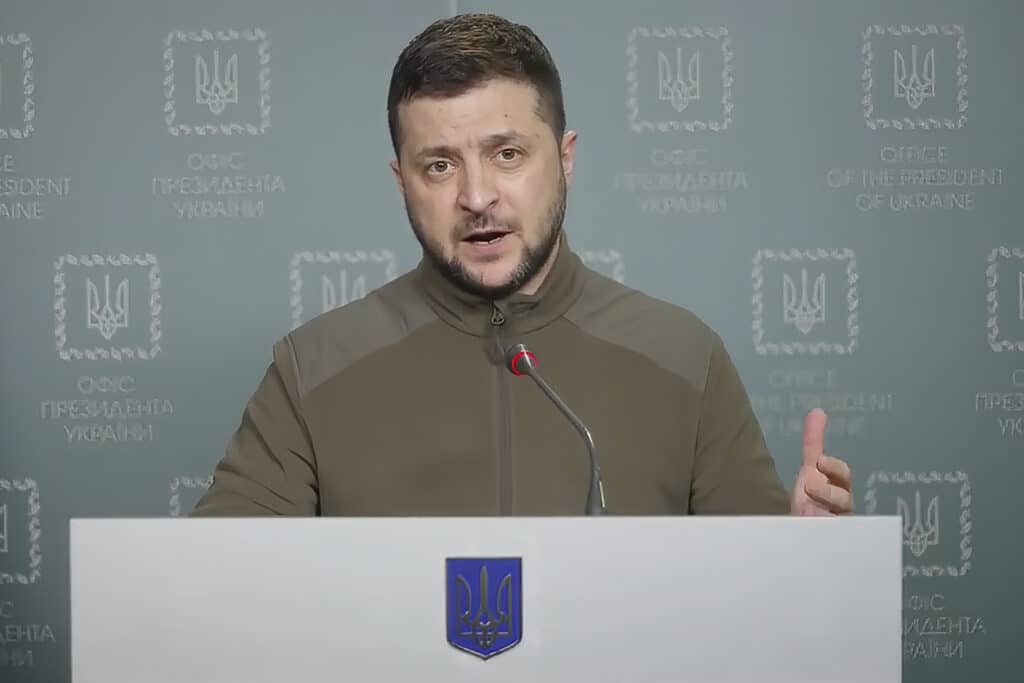
When, on Feb. 24, Russia unleashed its Ukraine invasion force in Europe’s biggest offensive since World War II and brandished the prospect of nuclear escalation if the West intervened, a lightning-swift toppling of Ukraine’s democratically elected government seemed possible.
But with Wednesday marking four full weeks of fighting, Russia is instead bogged down in an increasingly costly, uncertain, and grinding military campaign, with untold numbers of dead, no immediate end in sight, and encircled by western sanctions biting hard on its economy and currency. U.S. President Joe Biden and key allies meeting in Brussels and Warsaw this week will discuss possible new sanctions and additional military assistance for Ukraine.
The economic and geopolitical shockwaves — with soaring energy prices, fears for global food supplies, and Russia and China aligning in a new world order with echoes of the Cold War — have reverberated across the planet that still hasn’t emerged from the ongoing crisis of the coronavirus pandemic.
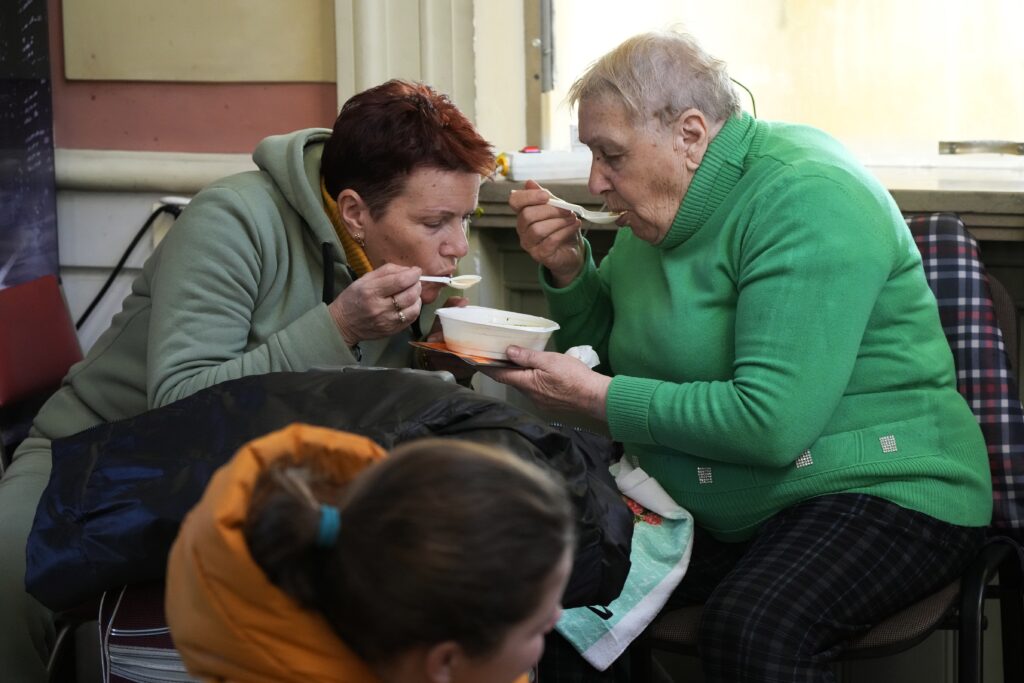
With his military-olive tops, rugged and resolute look, and impassioned appeals to governments across the world for help, Ukrainian President Volodymyr Zelenskyy has been transformed into a wartime communicator and No. 1 thorn on the side of Russian President Vladimir Putin. Addressing Japan’s parliament on Wednesday, Zelenskyy said four weeks of war have killed thousands of people and 121 of Ukraine’s children.
“Our people cannot even adequately bury their murdered relatives, friends and neighbors, they have to be buried right in the yards of destroyed buildings, next to the roads,” he said.
Repeatedly pushed back by hit-and-run Ukrainian units armed with Western-supplied weapons, Russian troops are shelling targets from afar, falling back on tactics they previously used in reducing cities to ruins in Syria and Chechnya. Major Russian strategic objectives remain unfulfilled: The capital Kyiv has been repeatedly hit but not taken or even encircled.
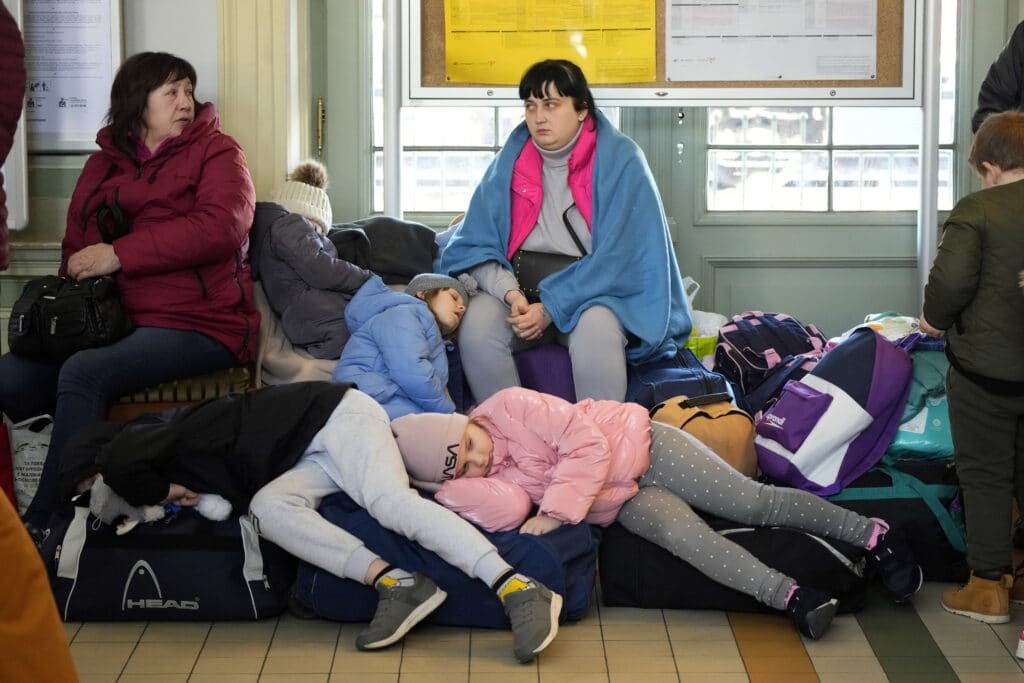
More shelling and gunfire shook the city again Wednesday, with plumes of black smoke rising from the western outskirts, where the two sides battled for control of multiple suburbs. A shopping mall and buildings were hit, injuring four people, the city administration reported.
In the south, the port city of Mariupol has seen the worst devastation of the war, under weeks of siege and bombardment. So far, the Ukrainian forces’ defense has prevented its fall. That is thwarting the Russian aim of opening up another permanent and secured land link from the Crimean peninsula, seized from Ukraine in 2014, to Russia.
Zelenskyy says 100,000 civilians remain in the city, which had a pre-war population of 430,000 and has been shattered by strikes from air, land and sea. Repeated efforts to get desperately needed food and other supplies to those trapped have often failed.
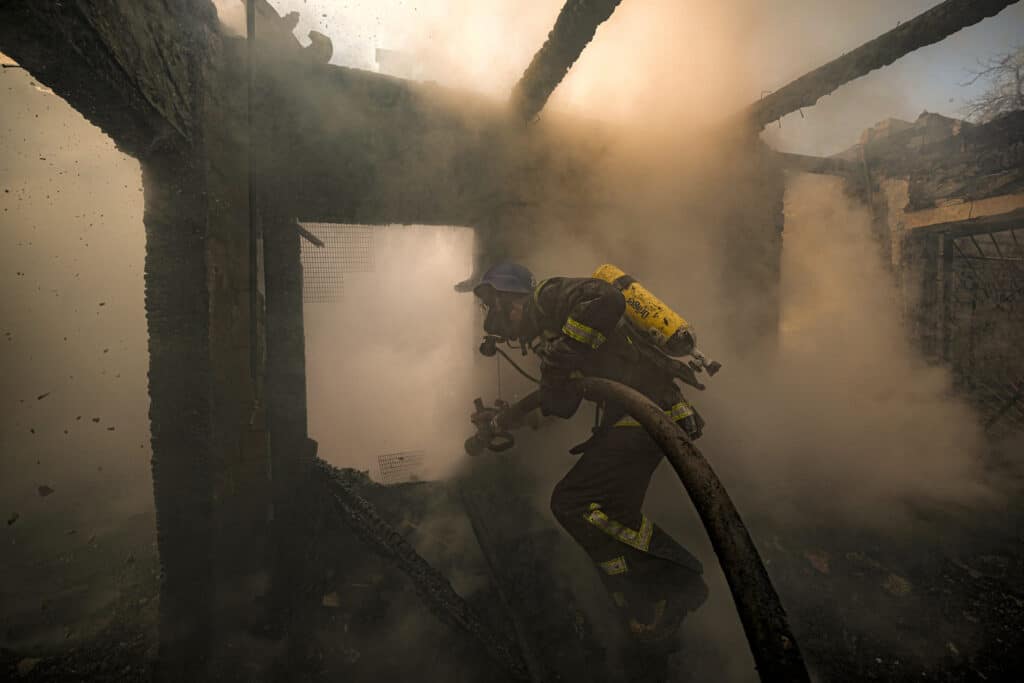
“They bombed us for the past 20 days,” said 39-year-old Viktoria Totsen, who fled from Mariupol into Poland. “During the last five days, the planes were flying over us every five seconds and dropped bombs everywhere — on residential buildings, kindergartens, art schools, everywhere.”
Zelenskyy, speaking Tuesday in his nightly video address to his nation, said efforts to establish stable humanitarian corridors for Mariupol residents are almost all being “foiled by the Russian occupiers, by shelling or deliberate terror.”
He accused Russian forces of seizing one humanitarian convoy. Deputy Prime Minister Iryna Vereshchuk said the Russians were holding captive 11 bus drivers and four rescue workers along with their vehicles.
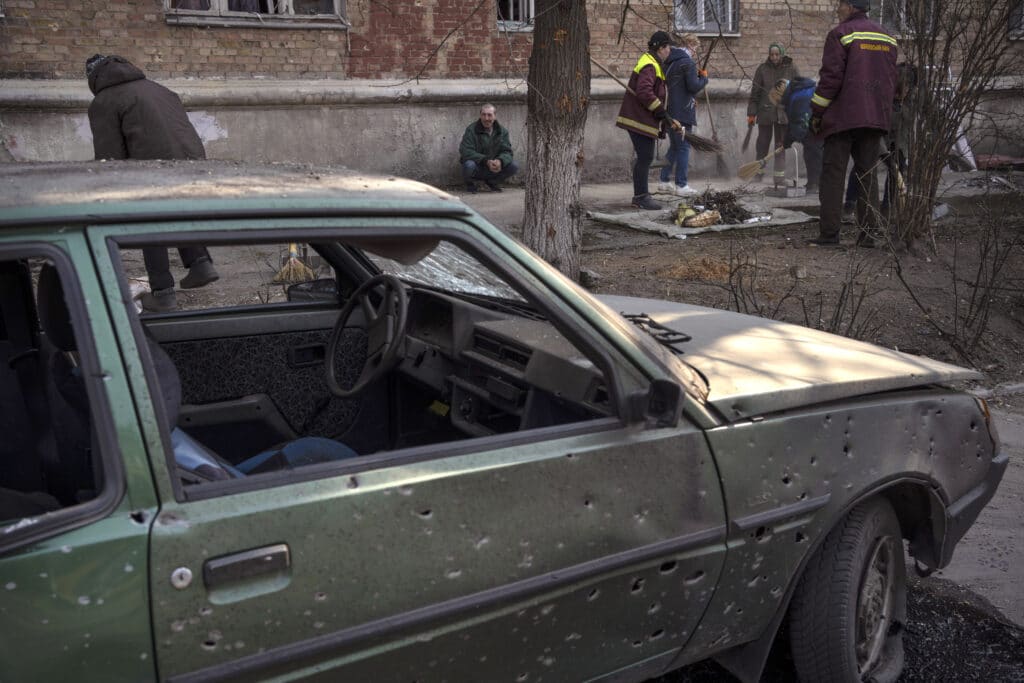
The head of the International Committee of the Red Cross traveled Wednesday to Moscow for expected discussions with Russian foreign and defense officials on prisoners of war, the conduct of hostilities, aid delivery and other humanitarian issues.
“The devastation caused by the conflict in recent weeks, as well as eight years of conflict in Donbas, has been vast,” Peter Maurer, the ICRC president, said.
A senior U.S. defense official, speaking on condition of anonymity to give the Pentagon’s assessment, said Russian ships in the Sea of Azov added to the shelling of Mariupol.
The hands of one exhausted Mariupol survivor shook as she arrived by train in the western city of Lviv.
“There’s no connection with the world. We couldn’t ask for help,” said Julia Krytska, who was helped by volunteers to make it out with her husband and son. “People don’t even have water there.”
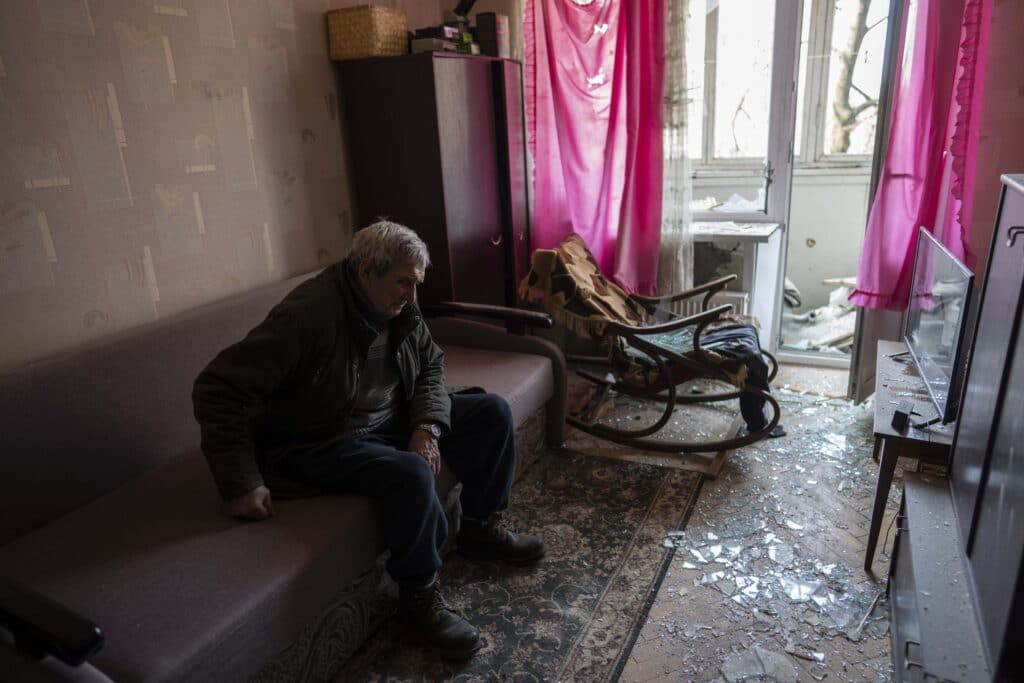
Perched on the Sea of Azov, Mariupol is a crucial port for Ukraine and lies along a stretch of territory between Russia and Crimea. It’s not clear how much of the city Russia holds, with fleeing residents saying fighting continues street by street. In their last update on March 15, Mariupol officials said at least 2,300 people had died in the siege. Accounts from the city suggest the true toll is much higher, with bodies lying uncollected. Airstrikes the past week destroyed a theater and an art school where many civilians were taking shelter.
Russian forces also bombed and destroyed a bridge in the encircled northern city of Chernihiv that crossed the Desna River and connected the city to Kyiv, regional governor Viacheslav Chaus said Wednesday. Deliveries of humanitarian aid and evacuations of civilians went through that bridge. Local authorities have warned of a humanitarian disaster in the city, with no water or electricity.
But as Biden embarked Wednesday on a four-day trip to Europe to shore up pressure on Russia, the Kremlin said Putin isn’t finished fighting yet.
Kremlin spokesman Dmitry Peskov insisted that the military operation was going “strictly in accordance with the plans and purposes that were established beforehand.”
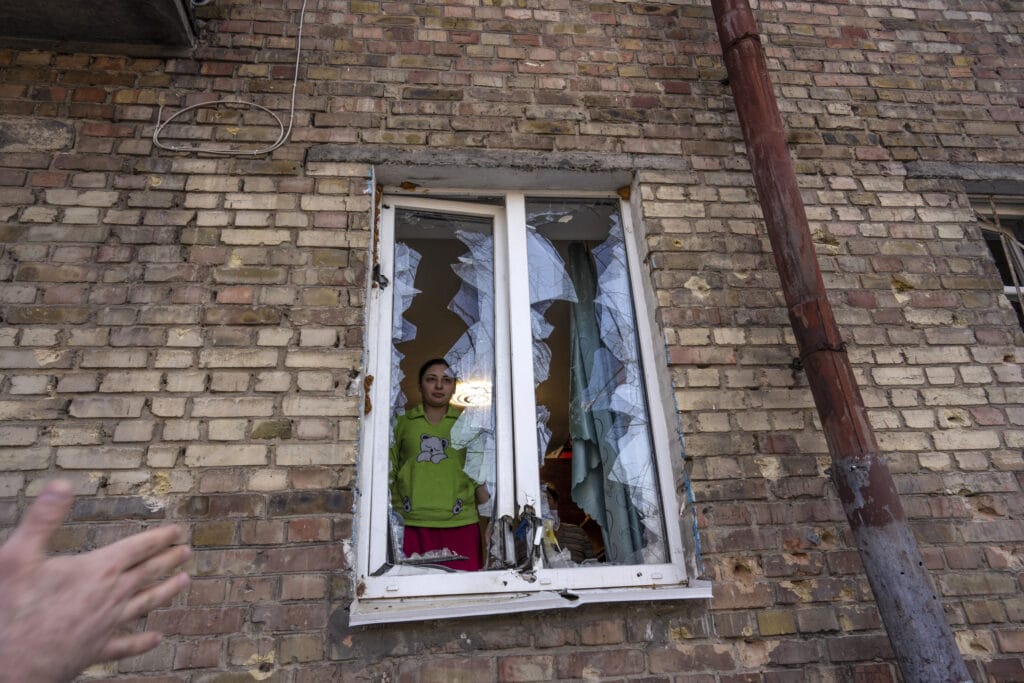
Putin’s aims remain to “get rid of the military potential of Ukraine” and to “ensure that Ukraine changes from an anti-Russian center to a neutral country,” Peskov said.
Officially, Russia is still insisting on the euphemism “special operation” for the campaign. It has effectively outlawed terms including “invasion” and “war” and police have carted away thousands of anti-war protesters. But as casualties mount and a quick victory is no longer in sight, Russia is having to adjust to keep up morale.
Under a law passed Wednesday by Russia’s parliament, troops in Ukraine will get the same benefits as veterans of previous wars, including tax breaks, discounts on utilities and preferential access to medical treatment
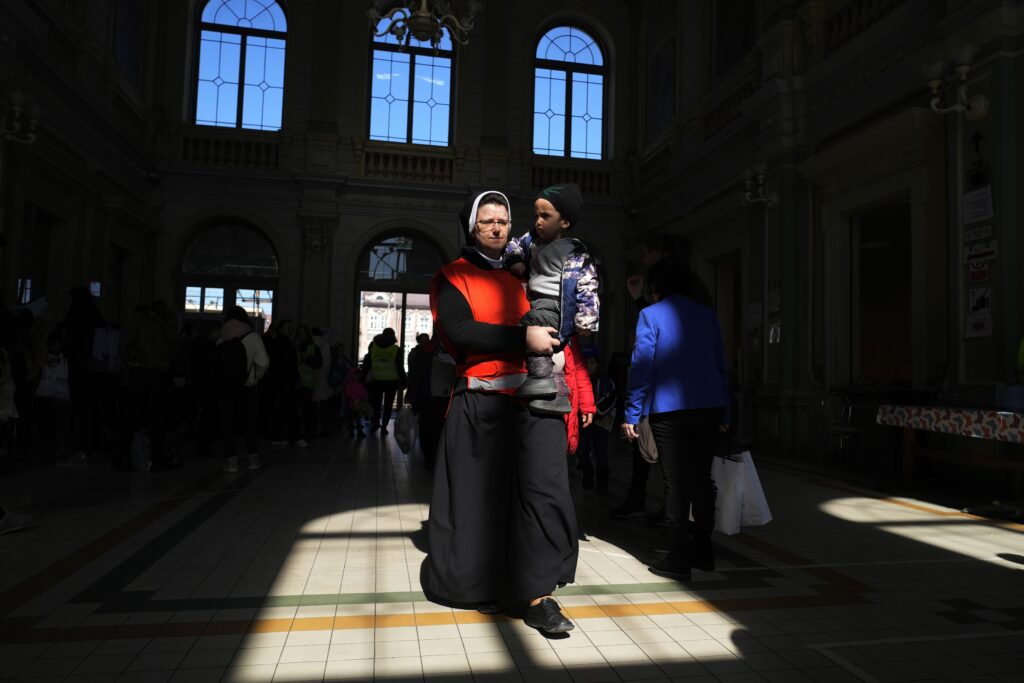
Western officials say Ukrainian resistance has brought much of Russia’s advance to a halt and that Russian forces are facing serious shortages of food, fuel and cold weather gear, leaving some soldiers suffering from frostbite. Britain’s defense ministry said Wednesday the war in northern Ukraine is largely “static,” with Russian forces trying to reorganize.
“We have seen indications that the Ukrainians are going a bit more on the offensive now,” Pentagon spokesman John Kirby told reporters separately in Washington. He said that was particularly true in southern Ukraine, including near Kherson, where “they have tried to regain territory.”
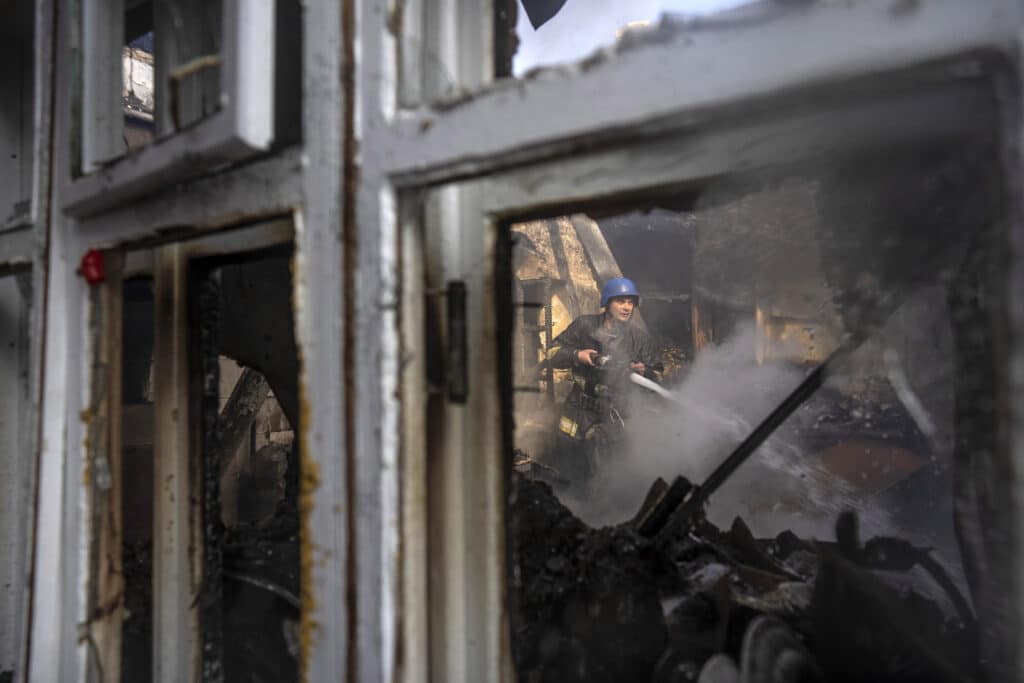
Russia’s far stronger, bigger military has many Western military experts warning against overconfidence in Ukraine’s long-term odds. Russia’s practice in past wars in Chechnya and Syria has been to grind down resistance with strikes that flattened cities, killing countless civilians and sending millions fleeing.
But Russian forces appeared unprepared and have often performed badly.
The U.S. estimates Russia has lost a bit more than 10% of the overall combat capability it had at the start of the fight, including troops, tanks, and other materiel.
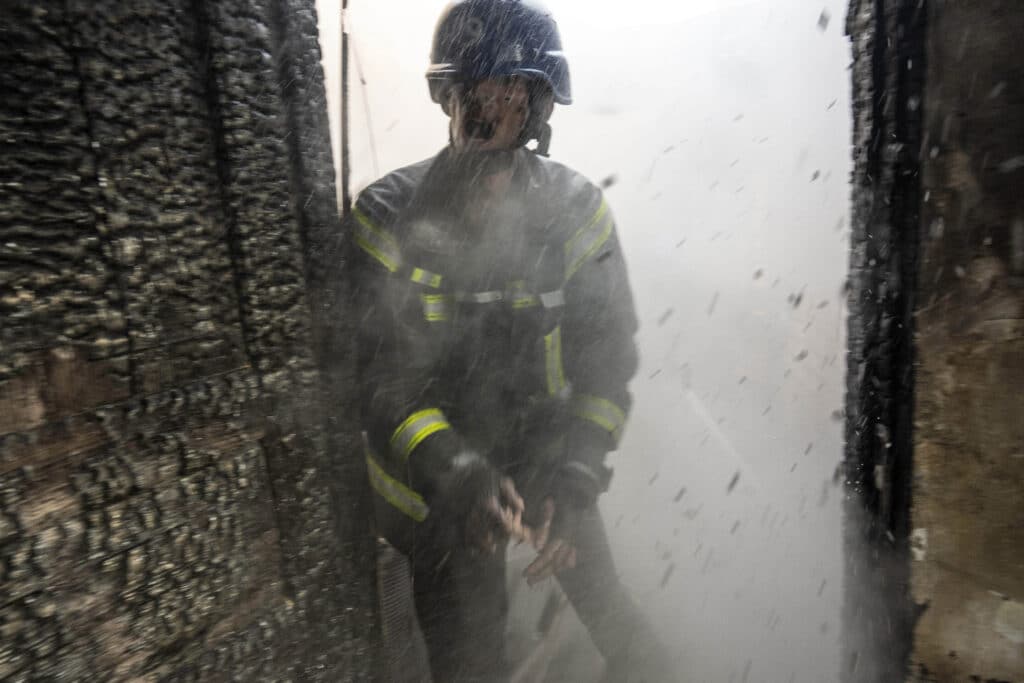
The invasion has driven more than 10 million people from their homes, almost a quarter of Ukraine’s population, according to the United Nations.
Thousands of civilians are believed to have died. Estimates of Russian military casualties vary widely, but even conservative figures by Western officials are in the low thousands.
Talks to end the fighting have continued by video. Zelenskyy said negotiations with Russia are going “step by step, but they are going forward.”
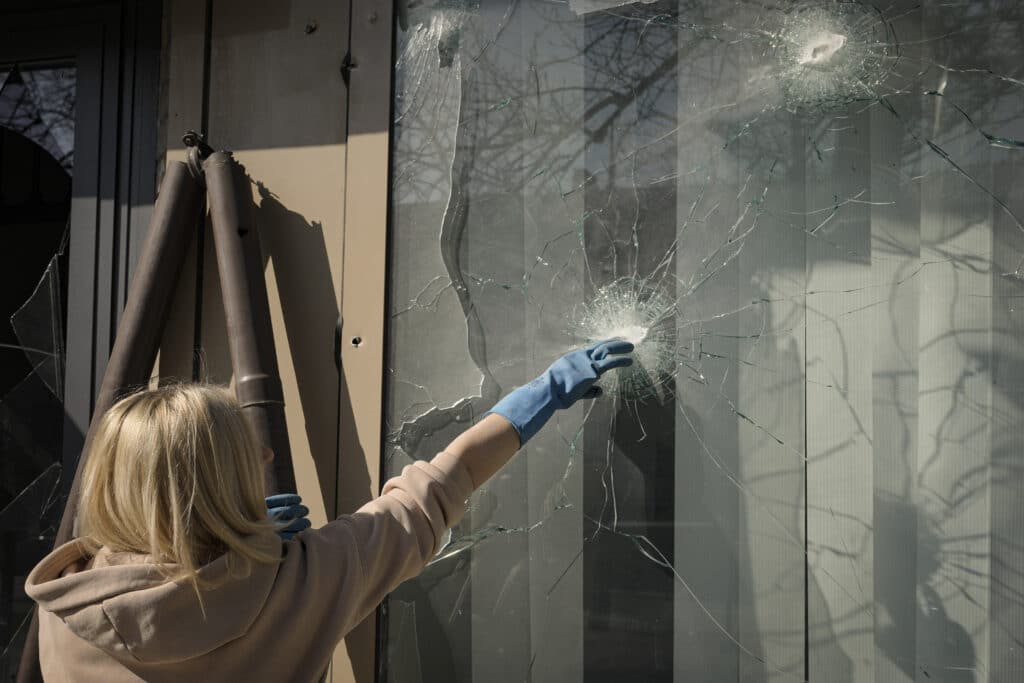
U.N. Secretary-General Antonio Guterres said he saw progress “coming into view on several key issues,” and that the gains are enough to end hostilities now. He gave no details.
By NEBI QENA and CARA ANNA
Anna reported from Lviv, Ukraine. Writer Yuras Karmanau in Lviv, and other AP journalists around the world contributed to this report.






